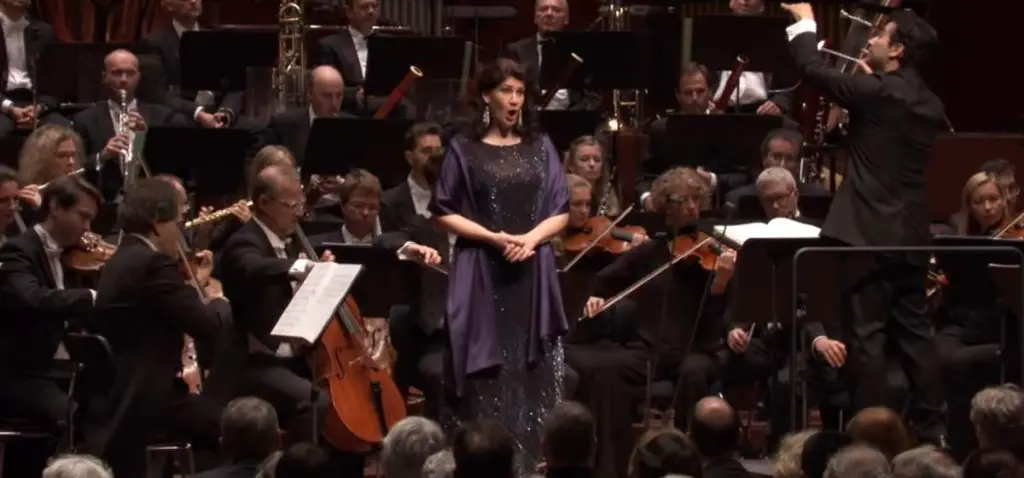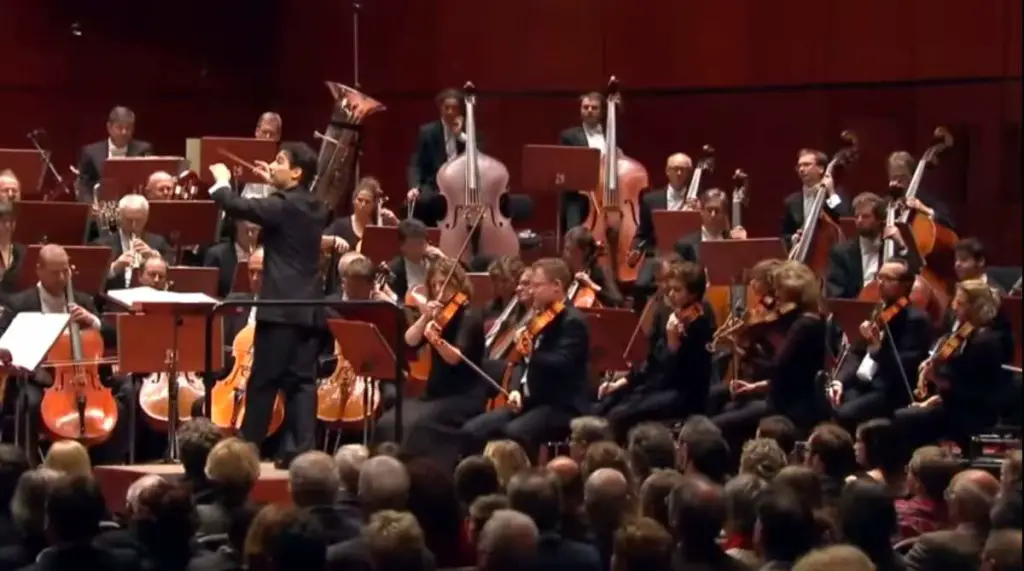Conducted by Jakub Hrůša, Radio Filharmonisch Orkest (Radio Philharmonic Orchestra) performs “Also
Also Sprach Zarathustra
Strauss’ work is inspired by the German philosopher Friedrich Nietzsche’s (1844-1900) philosophical novel of the same name and has been an important part of the classical repertoire since its first performance in 1896. The initial fanfare – titled “Sunrise” in the composer’s program notes – became particularly well-known after its use in Stanley Kubrick’s 1968 film 2001: A Space Odyssey.
Richard Strauss initially disavowed any connection between his score and Nietzsche beyond being inspired by the book’s poetic imagery and, particularly, its evocative chapter headings, eight of which Strauss employed as non-specific guides in his score.
The piece is divided into nine sections played with only three definite pauses. Strauss named the sections after selected chapters Nietzsche’s book:
- Einleitung, oder Sonnenaufgang (Introduction, or Sunrise)
- Von den Hinterweltlern (Of Those in Backwaters)
- Von der großen Sehnsucht (Of the Great Longing)
- Von den Freuden und Leidenschaften (Of Joys and Passions)
- Das Grablied (The Song of the Grave)
- Von der Wissenschaft (Of Science and Learning)
- Der Genesende (The Convalescent)
- Das Tanzlied (The Dance Song)
- Nachtwandlerlied (Song of the Night Wanderer)

The fiery debate that swirled around the score when it was new was caused less by the music than by the conflicting programs Strauss proposed at varying times as its subject matter. Before the Frankfurt premiere, he authorized the following shorthand program to be printed:
“First movement: Sunrise. Man feels the power of God. Andante
But that was neither his first (he had earlier leaked hints of a somewhat different program to the German press) nor last word on the subject. Strauss decided finally to put the matter to rest by prefacing the published score with the words of Nietzsche’s opening paragraphs, the “Ode to the Sun,” concluding in the exhortation to the creative spirit: “For too long we have dreamt music, now let us awake. We were nightwalkers. Let us now be daywalkers.” (Nietzsche, it might be remembered, was a composer himself.) The titles of the eight sections that follow the brass-percussion-organ depiction of the sunrise – the movie music – were the only other programmatic clues left by the composer.
The titles of the eight sections, which are played without pause, are “Of the Forest-dwellers”; “Of the Great Yearning”; “Of Joys and Passions”; “Dirge”; “Of Learning” – wherein the opening, three-note C-major theme of the “Sunrise,” by now associated with Zarathustra himself, evolves into a spectacular fugue. In the subsequent “The Convalescent” the preceding fugal subject reaches a peak of frenzied complexity before winding down to a gentle cello solo. With “The Dance Song,” Nietzsche’s ferocious philosopher, Zarathustra, breaks into a waltz. Some pro-Strauss critics have cited this as the composer’s glorification of the Life Force, while detractors point to it as an example of his wretched taste. In all likelihood, it is at once indicative of Richard Strauss’ affection for another (unrelated) Strauss, the Waltz King himself, and his (Richard’s) sense of humor, which included not taking himself nearly as seriously as his listeners did. The climax of the waltz melts into the finale, “The Night Wanderer’s Song,” announced by a bell tolling midnight, and concluding peacefully, with high woodwinds repeating, ever more softly, a B-major chord, while at the bottom of the orchestra the basses play the low C with which Also sprach Zarathustra began.
Notes by Herbert Glass
Sources
Also Sprach Zarathustra (Strauss) on Wikipedia- Also S
prach Zarathustra on GustavoDudamel.com
